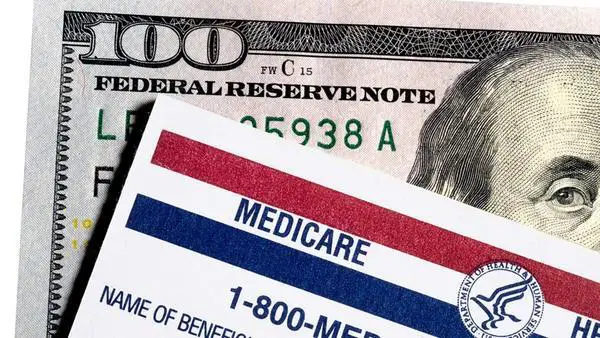
What is covered by Medicare
Medicare helps older U.S citizens maintain their medical costs. It provides health insurance to U.S citizens and permanent U.S residents who are over 65 years old. You can also get this insurance if you are not yet 65 years old but have end-stage renal disease or you are disabled. However, if you receive social security disability insurance, you will have to wait for two years before you are made eligible for this program.
This program was started by the federal government of the United States and is run by the Centers for Medicare and Medicaid Services. It is usually funded by Medicare and social security taxes paid by U.S citizens, premiums paid by the people under this program, and the federal government. When eligible for this program, you can decide to get its benefits from original Medicare, Medicare advantages, or Part D Coverage.
Original Medicare
The federal government pays a portion of your medical costs when you have original Medicare. It includes Part A (hospital coverage) and Part B (medical coverage). With this Medicare plan, you can visit most of the hospitals and doctors in the U.S. However, you need to show your Medicare card upon receiving medical services.
Part A (Hospital Coverage)
Medicare Part A will help you pay for hospital inpatient costs. It covers short time hospital stays, hospice care, limited home health care services and skilled nursing care. As a patient, you have to partly pay for coinsurance or a deductible. If you have Medicare Part, you may be able to receive palliative care.
You can get Medicare Part A if you are over 65 years old and you already receive social security retirement benefits. Also, if you or your spouse’s employment is covered by Medicare, you can get this coverage. If you are under 65, you need to show proof that you meet the set requirements for you to get this coverage.
You will not pay for Medicare Part A for you and your spouse and Medicare taxes for at least 10 years. However, if you paid your taxes for a lesser period than this, you will have to buy this coverage depending on how long you paid your taxes. For instance, if you paid these taxes for 39-30, you will have to give \$252 as a premium. If you paid for these taxes for less than 30 quarters, you will have to give \$458 as a premium.
Part B (Medical Coverage)
Medical insurance covers some necessary medical services and supplies needed to treat your health condition. For instance, it covers ambulance services, doctor visits, illness prevention services, medical equipment, mental health services, and prescribed outpatient drugs. If your doctor orders you to undergo physical therapy or rehabilitation, this insurance will cover it.
If you qualify for Part A coverage, you will automatically qualify for this coverage. If you enroll for this coverage you pay the required monthly premiums. If you do not qualify for Part A coverage, you have to meet the following requirements for you to qualify for this coverage.
- You must be at least 65 years old.
- You must have been permanently residing in the U.S for the last five continuous years or be a U.S citizen.
If you are not yet 65 years old and you have been receiving social security benefits for the last 2 years, you are eligible for this coverage.
You can enroll for Part B coverage 3 months before or after your 65^th^ birthday. If you do not enroll during this period, and you are not automatically enrolled for this coverage, you will be penalized for late enrollment. The penalty will be10% of your yearly premium and you will pay it for life. However, you can evade paying the penalties by enrolling during a Special Enrollment Period. For instance, if you enroll for this coverage within the first eight months after your employment health coverage ends, you will not be penalized.
Unlike Part A coverage, you have to pay monthly premiums for Part B coverage depending on your income amount. The premiums can change annually and are likely to be deducted from your social security benefits, otherwise, you will get a bill every month stating how much money you need to pay.
Part C Coverage
Part C coverage is an alternative of Part A and Part B coverage, and it is offered by private insurance companies. It offers the benefits offered by Part B, Part A except for hospice care and some of the benefits offered by Part D coverage. Although this plan is available in particular areas, it offers additional benefits such as visual, hearing, and dental care. You have to be enrolled in Part A and Part B coverage for you to get medical benefits through Part C.
Several plans are used when it comes to Part C Coverage. However, cost-sharing through deductibles, co-pays and co-insurance is what works when it comes to the services covered by these plans. Therefore, it is advisable to read more about these plans before choosing one, to know more about their costs.
Part D Coverage
This coverage deals with outpatient prescription drugs and is offered through authorized private companies. If you are enrolled in Part A and Part B coverage, you will receive this coverage as a stand-alone plan. However, if you are enrolled in Part C coverage, this coverage will be included in your plan as an added benefit.
Part D coverage has plans that cover different drugs. If you choose a plan that does not have the drugs that you need, you will have to pay for them. However, most Part D plans cover most available vaccines.
Many older people in the United States do not have to worry about medical costs due to the availability of Medicare. This program helps them receive health services and medical drugs as affordable drugs. However, you have to be enrolled for you to get these benefits.